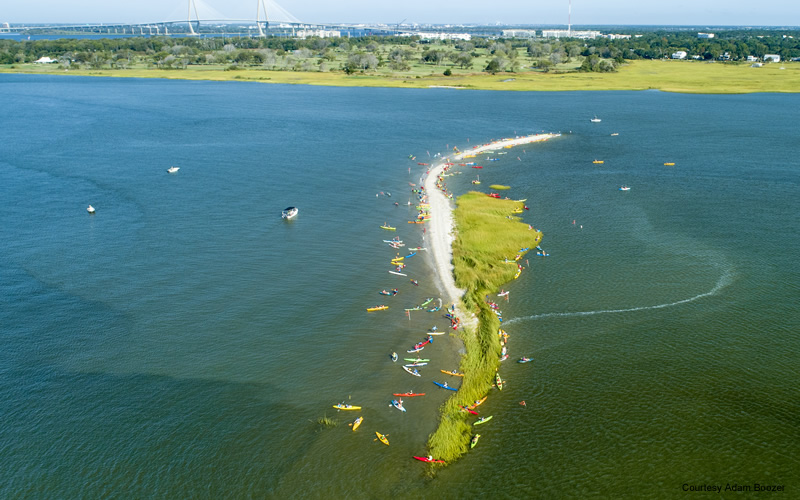
Image courtesy of Adam Boozer. On Instagram here.
Staff reports | U.S. Rep. Mark Sanford, R-S.C., and conservationists on Sunday surrounded Crab Bank, an eroding spit at the mouth Shem Creek, to illustrate how it should be protected as a seabird sanctuary.
Renourishment of the rookery may be the only way to save it, according to this story.
In March, Sanford and other congressmen sent a letter to the U.S. Army Corps of Engineers requesting that the Crab Bank Seabird Sanctuary be included in as a pilot project for revitalization.
In a statement, he said, “At just 2 percent of its original size, the Crab Bank Seabird Sanctuary is in danger of disappearing altogether. Interestingly, however, restoring the Crab Bank may be as easy as looking to its formation. Indeed, in the 1950s, the Crab Bank was formed from sediment dredged from the Charleston harbor. With the Charleston Deepening Project well on its way, it seems like the perfect time to rebuild.
“On a historic level, revitalizing the sanctuary is pressing now because scientists predict that, without changes, there will be no nesting on the island within the year. What a shame when pelicans have been in Charleston harbor since at least 1789. And from a practical level, rebuilding the Crab Bank will act as a buffer to prevent erosion for parts of Mount Pleasant.”
The Sunday flotilla included members of the S.C. Coastal Conservation League, Coastal Expeditions, local outfitters, conservation partners, and others.
“Right now, our community has a once-in-a-lifetime chance to rebuild the bank, using sand dredged from the Charleston Harbor deepening project — if we act quickly,” according to a statement by the Coastal Conservation League. “Restoring Crab Bank will require $1.5 million in local matching funds by December. You can learn more at sccoastalbirds.org.”
Crab Bank is home to at least 15 species of birds including brown pelicans, skimmers, terns and oystercatchers. Through the years, it has eroded to a one-acre spit.
- Have a comment? Send to: editor@charlestoncurrents.com



 We Can Do Better, South Carolina!
We Can Do Better, South Carolina!
























